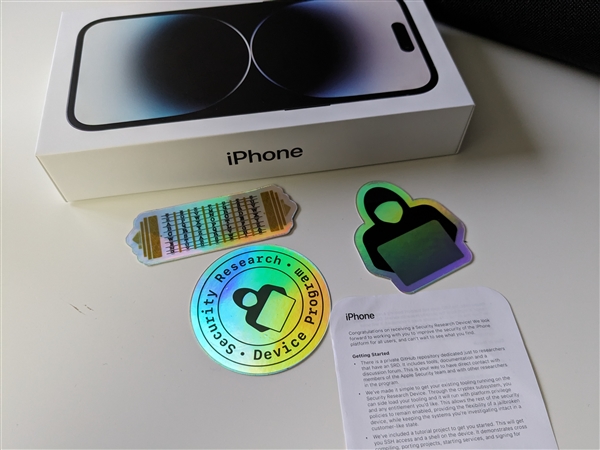
Security researcher Gergely Kalman shared a picture on social media, indicating that he received Apple’s security research equipment and the accompanying gifts. At the same time, the text in the lower right corner of the paper is the official description of the security research equipment.
The official description in the lower right corner mentions:
"We have simplified the process of running existing tools on security research equipment. Through the cryptex subsystem, you can sideload your tools, It will run with platform permissions and any level permissions you want. This allows the rest of the security policy to remain enabled, providing the flexibility of jailbreaking the device while keeping the system you are working on in a customer-like intact state."

In 2019, Apple announced that it would begin sending a "special" version of the iPhone to some security researchers designed to find vulnerabilities and then report them to Apple so that The company fixes these vulnerabilities.
In 2020, the company began shipping these devices, which were designed to disable some security features to make it easier for researchers to find bugs in iOS.
Apple has been battling jailbreakers for years to prevent people from disabling iPhone security features, but with this note, it appears the company has embraced the term "jailbroken."

According to Kalman, his security research device is "identical" to the iPhone 14 Pro. The only difference is that at the bottom of the lock screen it says "Security Research Device" and An Apple phone number, presumably to report if lost.
In addition to this, Kalman said there is a special label on the box that says "Do Not Remove" and "Property of Apple Inc." as well as a serial number, and there is also a mark on the side of the phone that says It says: "Property of Apple Inc. Confidential and Proprietary." It also comes with a contact information.

The above is the detailed content of Apple officially recognizes the term 'jailbreak': special version of iPhone rarely appears to find vulnerabilities. For more information, please follow other related articles on the PHP Chinese website!




